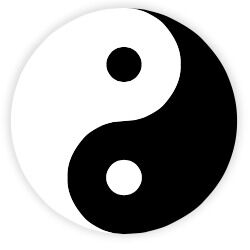Sleep
How Is Sleep Regulated?
Research reveals the complex mechanisms that control sleep and waking.
Posted December 30, 2020

Sleep and wakefulness are complex processes that require a substantial portion of brain circuitry to effectively regulate. These are not passive processes but complexly managed states that have to be fine-tuned in order to function effectively. Melatonin is naturally released from the pineal gland as light levels decline. If we were in darkness after the sun went down, as would have been the case before the invention of artificial light, this would help initiate the process of becoming drowsy and eventually falling asleep. This is a regulated rhythm in the body and will persist even if we are in a room that is brightly lit but bright light does diminish the output of melatonin. It’s no wonder that in our 24/7 world when our day ends and we finally climb into bed that what seems so natural — falling asleep — can be problematic and frustrating. It is amazing that such complex and reciprocal processes, sleeping and waking, can be finely tuned and effectively managed with little conscious thought or effort on our part.
But how does this happen? And why does it happen? Research over the past century has given greater insight into the neural basis of sleep and wakefulness than has ever before. This is especially true since the discovery of REM sleep in the 1950s. Advances in evolutionary theory have also helped us understand how sleep developed in animals and why it is so important for effective functioning in the world.
In very general terms, sleep seems to be broadly correlated with body size (Turek & Zee, 2017). Opossums sleep about 18 hours, ferrets about 14.4 hours, cats about 12.5 hours, dogs about 10.1 hours, humans about 8 hours, and elephants about 3 hours. This seems to be related to the metabolic rate of the different species. Body size is roughly inversely related to average sleep time. Despite these broad generalities, it is clear that this is not the only factor regulating sleep as there is great individual and intraspecies variability. For example, similar-sized mice of the same species may nevertheless have total sleep times that vary by about 2.5 hours.
Living systems need to maintain homeostasis, the steady state of physical and chemical processes that are required to stay alive. Evolutionarily, being able to coordinate bodily needs with the rhythm of the day/night cycle would confer a survival advantage to a species. Indeed, every life form, plant or animal, studied so far has a 24-hour cycle built into it known as the circadian rhythm. This rhythm allows an organism to align itself with the 24-hour day/night cycle of our planet. For plants, this might mean orienting leaves in the direction of the rising sun in the morning so as to maximally benefit from its life-giving light.
As an example for animals, mice are nocturnal because they are small and thus are easy prey for larger predators. Sleeping during the day when it is easy to be seen and being awake during the night when it is not is a significant advantage for survival for mice. Sleep propensity appears to be related to the coordination of basic biological processes with the expected demands of the environment. When this is automatically managed by internal homeostatic processes, it is not necessary for an animal to think about sleeping or waking, these take place at the time it is most advantageous. Consider, for example, the need to use the bathroom. This is typically suppressed by the circadian system during the night when it would be difficult or dangerous to do so. We are aware of how disruptive to sleep an overactive bladder or intestinal problem can be.
An important model for understanding the regulation of sleep was developed a number of decades ago to explain this process in animals and it has been successfully extended to humans. This model posits that sleep is regulated by two major processes. The first is the homeostatic process called S, which is the drive to sleep, and the second a circadian process called C. Process C is controlled by a circadian pacemaker in the brain while process S involves chemical changes in the nervous system as the brain uses energy over the course of the day. The interaction of these two processes determines the timing of sleep and waking (Achermann, & Borbely, 2017).
Sleep propensity rises as the day goes on and the homeostatic drive to sleep increases. This is similar to the way hunger works. In general, the longer you go without eating, the more hungry you will become. Meanwhile, the circadian rhythm keeps track of the time to allow effective coordination of bodily needs with the opportunities offered by the planet at different times of the day.
An example would be the suppression of hunger during the fast that occurs in the night when, historically, it would have been difficult or impossible for people to get easy access to food. As it gets later after noon, the homeostatic drive to sleep becomes greater and greater. The circadian clock during this time helps us to stay alert until sometime in the evening when there is an alignment between homeostatic drive and circadian sleep propensity, leading to drowsiness and the desire to sleep. Conversely, as the night goes on and the homeostatic drive to sleep is satisfied, the circadian propensity to sleep helps maintain sleep until the morning when the two systems are again in alignment.
The two-process model has been helpful in sleep research on factors such as fatigue and performance (Borbély et al, 2016). After over 30 years of research, it has shown effectiveness in predicting the timing and intensity of sleep in various experimental situations. The two processes interact continuously throughout the day and night to regulate sleep and wakefulness. It has been the basis of many of the behavioral interventions we employ to help treat insomnia and circadian rhythm disorders. We do this by better controlling the factors that affect these processes such as light exposure and timing of getting into bed and getting up.
This model also makes clear how certain aspects of modern living can have such significant and often negative impacts on our sleep, alertness, and general health. One of the most important is our ability to experience situations that would have been difficult or impossible in a pre-industrial era. For example, it is very easy to expose one’s self to bright light at any time of the night, thus throwing off the delicate balance of the sleep/wake cycle. Likewise, it is easy to have a snack, or even a meal, at any time of day or night. The clinical challenge then, is to use our understanding of the two-factor model to help us better regulate our activities to maintain a good balance between the homeostatic drive and the circadian rhythm.

References
Achermann, P. & Borbély, A.A. (2017). Sleep homeostasis and models of sleep regulation, in Kryger, M, Roth, T, & Dement, W.C. (Eds.), (2017). Principles and Practice of Sleep Medicine sixth edition, Philadelphia: Elsevier, Inc., p. 381 - 385.
Borbély, A.A., Daan, S., Wirz‐Justice, A. and Deboer, T. (2016), The two‐process model of sleep regulation: a reappraisal. Journal of Sleep Research, 25, p. 131- 143; https://doi.org/10.1111/jsr.12371
Turek, F.W. & Zee, P.C. (2017). Introduction: Master circadian clock and master circadian rhythm, in Kryger, M, Roth, T, & Dement, W.C. (Eds.), (2017). Principles and Practice of Sleep Medicine sixth edition, Philadelphia: Elsevier, Inc., p. 341 - 342.




